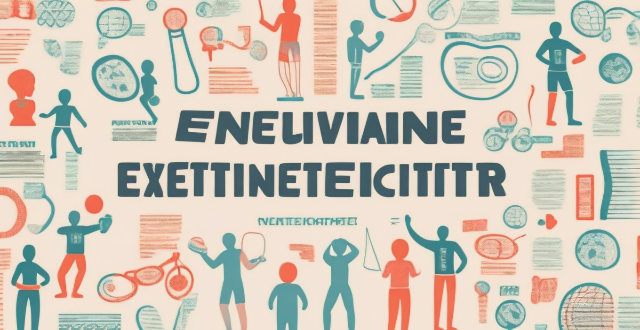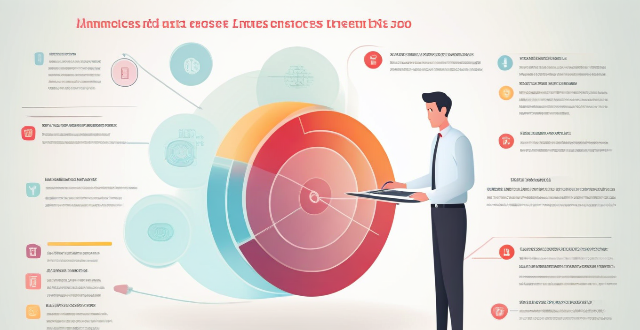Customer Influence

How does social media influence consumer behavior ?
Social media has transformed consumer behavior by increasing brand awareness, influencing purchasing habits, and changing perceptions of brands. It enables consumers to compare products, share feedback, and engage with companies directly. Social media also plays a crucial role in product development by providing insights into consumer needs and preferences. Companies can foster customer loyalty through engagement and exclusive deals on these platforms. The rise of social commerce allows for direct purchases within apps and live streaming sales events. Personalization and targeted marketing, including influencer collaborations, further impact consumer choices. Overall, social media's influence on consumer behavior is significant and continues to evolve with technological advancements.

How do product reviews influence the development of new products ?
## Topic Summary: The Influence of Product Reviews on New Product Development Product reviews are a valuable resource for companies in the development of new products. They provide direct feedback from customers, helping to identify customer preferences, pain points, and emerging trends. By analyzing these reviews, companies can make informed decisions about product design, features, and improvements. Additionally, positive reviews can enhance brand trust and credibility while marketing strategies can be tailored based on customer segments. Companies should prioritize collecting and analyzing product reviews as part of their overall product development process.

How can automation be used to improve customer service ?
Automation can significantly enhance customer service by streamlining processes, reducing errors, and providing consistent support. It enables personalized communication through chatbots and email automation, efficient processes via self-service options and backend automation, a consistent experience with standardized responses, cost-effective solutions through scalability, and continuous improvement using feedback loops. As technology progresses, the potential for automation in customer service will continue to expand, leading to more innovative ways to meet customer needs.

How does Fintech improve customer experience in banking ?
Fintech has transformed the banking industry by providing innovative solutions that improve customer experience. It offers personalized services, faster transactions, enhanced security, and innovative features. Fintech companies provide a seamless user interface, personalized financial advice, customized products, faster transactions, instant access to information, streamlined processes, robust security measures, transparent fees, regulatory compliance, mobile payments, peer-to-peer lending, crowdfunding, and exploration of cryptocurrencies and blockchain technology. These advancements have significantly improved customer experience in banking and will continue to shape the future of banking as technology evolves.

How can sports marketing help to build customer loyalty ?
Sports marketing is a powerful tool that can build customer loyalty by leveraging the emotional connection between fans and their favorite teams. Strategies include sponsorships, promotions, giveaways, and social media engagement to create a sense of shared identity and community among customers. Examples include Nike's sponsorship of the Brazilian national football team, Coca-Cola's partnership with the Olympic Games, Budweiser's "Up for Whatever" campaign, McDonald's "McRib" promotion during the World Series, ESPN's social media presence, and Red Bull's extreme sports content on social media channels. By establishing themselves as trusted partners of popular sports teams and events, businesses can increase customer loyalty and brand recognition.

How do I contact customer service for my mobile operator ?
How to Contact Customer Service for Your Mobile Operator

How can I compare different online shopping sites for their customer service ?
In this article, we discuss how to compare different online shopping sites for their customer service. The first step is to research and gather information by reading reviews and testimonials, checking social media presence, and asking for recommendations from friends or family. The second step is to analyze the information by comparing customer service options, evaluating response time, and assessing quality of service. The final step is to make a decision based on weighing pros and cons and trying before you buy. By following these steps, you can choose an online shopping site that offers excellent customer service and meets your needs.

Which shopping apps have a strong focus on customer service and support ?
The provided text discusses the importance of customer service and support in shopping apps. It then goes on to highlight five notable shopping apps—Amazon, Shopify, Etsy, eBay, and Alibaba—that prioritize these aspects. Each app is described in terms of its unique features and services that enhance user experience. For Amazon, it's the live chat and email support, 24/7 availability, and the Mayday button for Fire devices users. Shopify is praised for its multichannel support, extensive knowledge base, and active community forums. Etsy is lauded for its personalized assistance, seller education, and resolution center. eBay's detailed resolution process, security measures, and seller protections are highlighted. Lastly, Alibaba is commended for its Trade Assurance program, legal services, and supplier verification. In conclusion, these shopping apps understand the significance of supporting their users throughout the shopping journey, each offering unique strengths in customer service and support.

What kind of customer feedback has been received so far for the new product ?
The new product has received mostly positive feedback, withThe new product has received mostly positive feedback, with user-friendly interface, speed However, there have been concerns about compatibility issues, software bugs, and pricing. Some customers also mentioned the need for additional features and improvements in customer support services. Overall, the feedback will be used to make necessary improvements and meet customer expectations.

How do celebrities influence the trends in sports fashion ?
Celebrities significantly impact sports fashion trends by setting styles, partnering with brands, using social media influence, promoting healthy habits, and participating in sports events. This influences consumer choices and shapes the market for sportswear.

How do celebrities influence fashion trends and beauty standards ?
Celebrities significantly influence fashion trends and beauty standards through their endorsements, red carpet appearances, social media presence, and collaborations with designers. They set trends by making innovative style choices and promoting self-care and wellness. However, their influence is not without controversy, as some argue it leads to unrealistic beauty standards and cultural appropriation.

How can investors influence corporate behavior towards reducing carbon emissions ?
Investors can influence corporate behavior towards reducing carbon emissions by using their financial power and influence. They can do this through shareholder engagement, collaborative engagement, financial incentives, public advocacy, and strategic dialogue. By employing these strategies, investors not only promote corporate responsibility but also pave the way for a more sustainable future.

What kind of expertise do celebrities bring to their roles as entrepreneurs ?
Celebrities often leverage their fame and influence to venture into entrepreneurship. The expertise they bring to their roles as entrepreneurs can vary, but some common areas include name recognition, influence and social media presence, networking opportunities, creative vision, financial resources, public speaking and charisma, negotiation skills, perseverance and resilience, and personal brand alignment. These factors can contribute to the success of their ventures and set them apart from other entrepreneurs.

How does sports influence literary creation ?
The influence of sports on literary creation is explored in this article. Sports have provided writers with motivation and inspiration, introduced themes and characters, contributed to realism and atmosphere, and served as a vehicle for social commentary. Examples from various literary works are given to illustrate these points.

How do product reviews influence consumer purchasing decisions ?
Product reviews significantly impact consumer purchasing decisions by providing trustworthiness, social proof, detailed information, risk mitigation, influencing perception, and driving engagement. They offer authenticity, objectivity, peer influence, detailed product information, comparison shopping, reduced uncertainty, brand image enhancement, price justification, community building, and a feedback loop for product improvement. Businesses should focus on high-quality products and customer service to ensure positive reviews and boost sales.

How does sports influence art expression ?
The text discusses how sports have influenced art expression throughout history and across various mediums. It outlines the impact of sports on visual arts, literature, music, dance, and fashion. The visual arts section includes sculpture, painting, photography, digital art, and motion graphics. The literature section covers sports literature, poetry, and ekphrastic poetry. The music section discusses national anthems, fight songs, pop culture, and hip hop culture. The dance and performance art section covers contemporary dance and performance art. Finally, the fashion section includes sportswear design and high-fashion collaborations. Overall, the text emphasizes the diverse and profound influence of sports on art expression.

What are the positive effects of celebrity influence on society ?
Celebrities wield significant influence that extends beyond their areas of expertise, and this influence can have both positive and negative impacts on society. The positive effects include raising awareness on important issues, promoting education, cultural exchange, economic growth, sustainable living, fashion trends, and driving social change through activism. Celebrities can use their platforms to bring attention to global concerns, promote healthy lifestyles, encourage mental health discussions, support literacy programs, inspire STEM pursuits, showcase cultural diversity, boost local businesses, foster entrepreneurship, advocate for eco-friendly practices, diversify beauty standards, engage in political conversations, and strengthen community bonds. However, with great influence comes great responsibility; celebrities should strive to use their platform thoughtfully and constructively for the betterment of society.

Can celebrity influence be harnessed for educational purposes or promoting literacy ?
This article explores the potential of leveraging celebrity influence for educational purposes and promoting literacy. It outlines how celebrities can advocate for education, serve as role models, and directly involve themselves in educational initiatives. The text also suggests ways celebrities can promote literacy, such as hosting reading challenges, authoring children's books, and endorsing online courses. Overall, the article concludes that celebrity influence can be a powerful tool for fostering a culture of learning and literacy.

How does sports culture influence fashion trends and consumer behavior ?
The intersection of sports culture and fashion trends is a dynamic relationship that significantly influences consumer behavior. As lifestyles become more active and health-conscious, the impact of sports culture on fashion choices extends beyond athleticwear to high fashion and streetwear. Athleisure, collaborations between sports and luxury brands, and the influence of sports icons have redefined what's considered stylish and desirable. Consumers increasingly prioritize comfort, functionality, and sustainability in their clothing choices, reflecting a shift towards durable, high-quality sports apparel over disposable fast fashion items. The rise of fitness influencers on social media platforms further drives this trend, shaping public perception of workout gear. Overall, the sports-fashion nexus is expected to continue growing, reflecting societal values of health and wellness.

How do sports figures use their influence to promote charitable causes ?
Athletes and sports figures leverage their fame, influence, and reach to promote charitable causes, making a difference in various aspects of humanitarian work. They use their platform to educate the public about issues that need attention, share personal stories related to the cause, organize matches or events where proceeds go towards a specific charity, donate prize money from competitions, create special merchandise with a portion of sales going to support a charity, volunteer time with organizations, give back to local communities by participating in local events or contributing to community projects, meet with legislators to discuss policies that could positively impact their supported causes, engage in lobbying efforts, partner with established charitable organizations, and team up for endorsement deals that include clauses where a portion of earnings goes towards a specific charity or is used to support a social initiative.

How does network expansion impact customer experience ?
Network expansion improves customer experience by increasing coverage, reducing disconnections, boosting speed and reliability, and enhancing accessibility to services and devices.

What factors determine the ranking of an online shopping website ?
The ranking of an online shopping website is determined by several factors, including user experience (navigation, search functionality, page load speed, mobile optimization), product quality and variety (descriptions, images/videos, variety), price competitiveness (pricing, promotions/discounts, price comparison tools), security and privacy (payment options, privacy policies, data protection), customer service (support, order tracking, returns process), and reviews and ratings (customer reviews, rating systems, feedback mechanisms). By focusing on these key areas, websites can improve their rankings and attract more customers while providing a seamless shopping experience.

How can companies improve their products based on customer reviews ?
Companies can improve their products by listening to customer reviews, addressing negative feedback, encouraging constructive criticism, implementing continuous improvement, and leveraging positive reviews. This involves analyzing feedback using NLP tools, categorizing issues, prioritizing actions, investigating complaints, implementing fixes, communicating changes, creating a supportive environment for honest feedback, establishing a feedback loop, iterating rapidly, monitoring progress, highlighting strengths, celebrating successes, and maintaining quality. By doing so, companies can enhance their offerings and stay relevant in the market.

How does Fintech influence the job market in the finance industry ?
The influence of fintech on the job market in the finance industry has led to the creation of new roles and changes in the skillset required for existing positions. Fintech companies have increased demand for software developers, data scientists, and cybersecurity experts. Additionally, specialized financial roles like fintech startup founders, regulatory compliance officers, and customer experience managers have emerged. Traditional finance roles such as bankers, accountants, and investment advisors now require proficiency in digital tools and an understanding of automation and data analytics. As technology continues to advance, the finance industry workforce will need to adapt continuously to stay relevant in the changing job market.

How do I know if a clearance sale is the right strategy for my business ?
Clearance sales can be an effective strategy for businesses looking to move inventory and boost revenue. However, it's important to consider whether this approach aligns with your overall business goals before implementing it. Here are some factors to consider: - **Objectives and Goals**: What are your objectives and goals for holding a clearance sale? Are you trying to liquidate old stock, increase cash flow, boost customer traffic during slow periods, or enhance brand recognition by offering discounts to a wider audience? Understanding your primary goal will help you determine if a clearance sale is the right strategy. - **Inventory Analysis**: Analyze your current inventory to see if there are products that could benefit from a clearance sale. Identify slow-moving items, seasonal goods, and discontinued or outdated products. - **Customer Behavior**: Consider how your customers might react to a clearance sale. Do your customers typically look for deals and discounts? Will discounting affect how customers view your brand in the long term? Will regular customers feel alienated if they missed out on the sale? - **Market Conditions**: Take into account external market conditions that may influence the success of a clearance sale. Are other businesses in your industry also having sales? This could impact your strategy. During economic downturns, consumers may be more inclined to wait for sales. Timing your sale around holidays or seasonal changes can increase its effectiveness. - **Financial Impact**: Assess the potential financial implications of holding a clearance sale. Calculate the minimum acceptable price to ensure you don't lose money. Determine if the immediate influx of cash from a sale is necessary for operations. Consider how much budget you'll have left for upcoming inventory after the sale. - **Alternative Strategies**: Explore other strategies besides a clearance sale that might achieve similar results. Offer volume discounts instead of across-the-board discounts. Reward repeat customers with exclusive discounts or early access to sales through loyalty programs. Group products together at a discounted price to encourage larger purchases through bundle offers. If, after considering all these factors, you find that a clearance sale aligns well with your business objectives and will not negatively impact your brand or financial health, then it could be the right strategy for you. Always remember to communicate clearly with your customers about the reasons behind the sale and ensure that it complements rather than detracts from your overall business strategy.

How do retailers benefit from offering a buy one get one free promotion ?
Retailers can benefit from offering a "buy one get one free" (BOGO) promotion by attracting new customers, increasing sales, managing inventory more effectively, enhancing brand perception, and collecting valuable customer data. This marketing strategy not only boosts short-term revenue but also helps build long-term customer loyalty and brand equity.

In what ways do economic factors influence the development and assessment of climate policies ?
Economic factors play a crucial role in the development and evaluation of climate policies, affecting decision-making processes, implementation measures, and assessments of effectiveness. These influences include cost-benefit analysis considering both direct and indirect costs, as well as quantifying avoided costs and non-market benefits. Economic growth and development must balance immediate needs against long-term sustainability goals, potentially leading to tension between current jobs and investment in cleaner technologies. International trade and competitiveness are impacted by concerns over carbon leakage and green trade barriers. Public acceptance and political will are influenced by perceptions of fairness and economic impacts on different income groups, while innovation and technology development depend on investments in research and development and the affordability of technology transfer. Overall, achieving effective climate action requires a careful consideration of economic dynamics alongside environmental objectives.

How does scientific literacy among women influence their career choices in science and technology fields ?
Scientific literacy significantly influences women's career choices in science and technology fields by enhancing opportunities, overcoming barriers, increasing diversity, and improving representation. It enables women to access complex scientific information, develop problem-solving skills, broaden their perspectives, break stereotypes, promote equality, address biases, expand career horizons, encourage mentorship, foster collaboration, challenge underrepresentation, influence policy, and change public perceptions about the suitability of these fields for females.

Can sports sponsorship influence consumer purchasing behavior ?
Sports sponsorship is a marketing strategy that aims to increase brand awareness and positively influence consumer attitudes towards the brand. It works by providing increased exposure, building an emotional connection with consumers, enhancing the brand's image, and differentiating from competitors. The impact on consumer purchasing behavior can be direct or indirect, including immediate sales boosts, product trials, brand loyalty, and word of mouth recommendations. Measuring the impact involves analyzing sales data and tracking brand metrics. Success stories like Nike and Michael Jordan and Coca-Cola and Olympic Games demonstrate the potential of sports sponsorship. However, challenges and pitfalls exist, such as misaligned partnerships and overshadowing controversies. In conclusion, sports sponsorship can significantly influence consumer purchasing behavior when executed strategically and appropriately.

How do ESG considerations influence talent acquisition and retention ?
The text discusses how Environmental, Social, and Governance (ESG) considerations influence talent acquisition and retention. It states that companies are recognizing the value of incorporating ESG factors into their strategies to attract and retain top talent. The key points include attracting talent through ESG initiatives, retaining talent by aligning with personal values, benefits such as improved reputation and cost savings, challenges in balancing ESG with other priorities, and best practices for implementation. The conclusion emphasizes the importance of prioritizing ESG considerations while ensuring transparency and accountability in all aspects of ESG reporting.